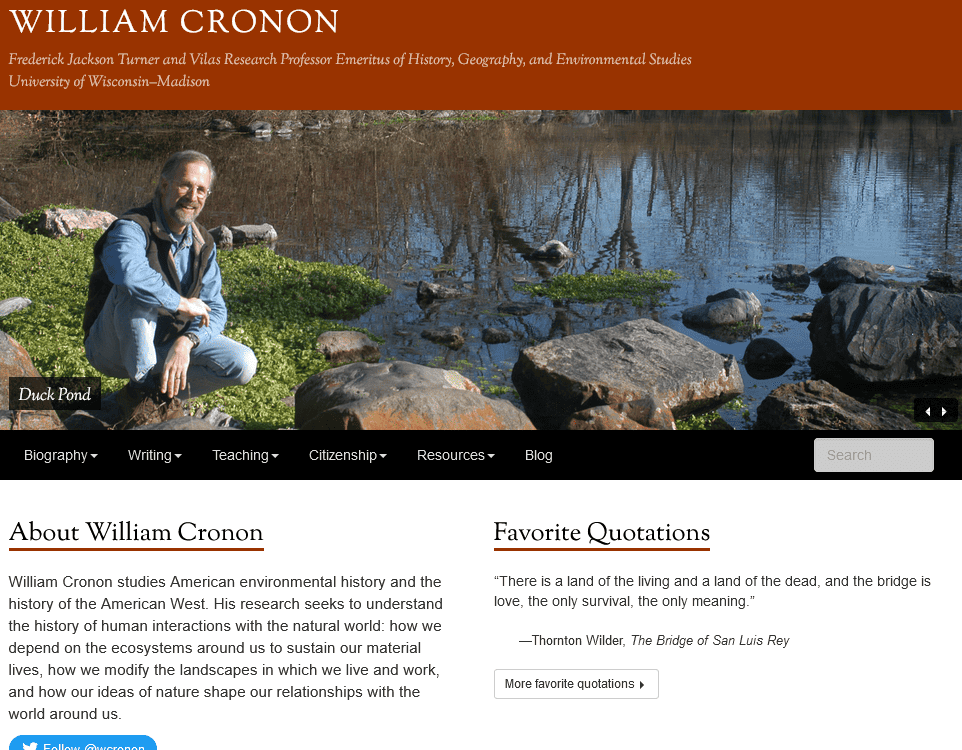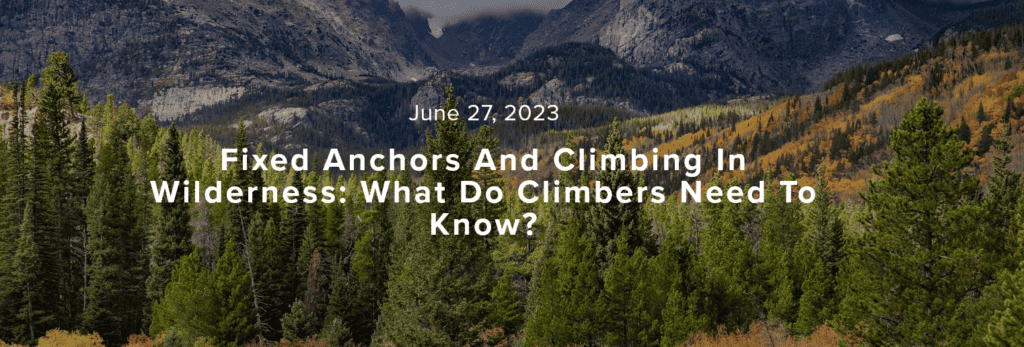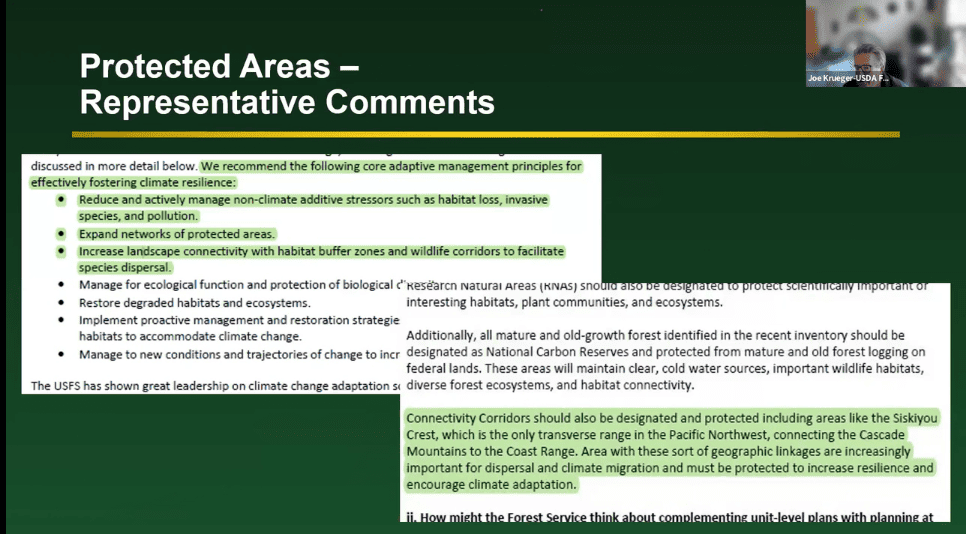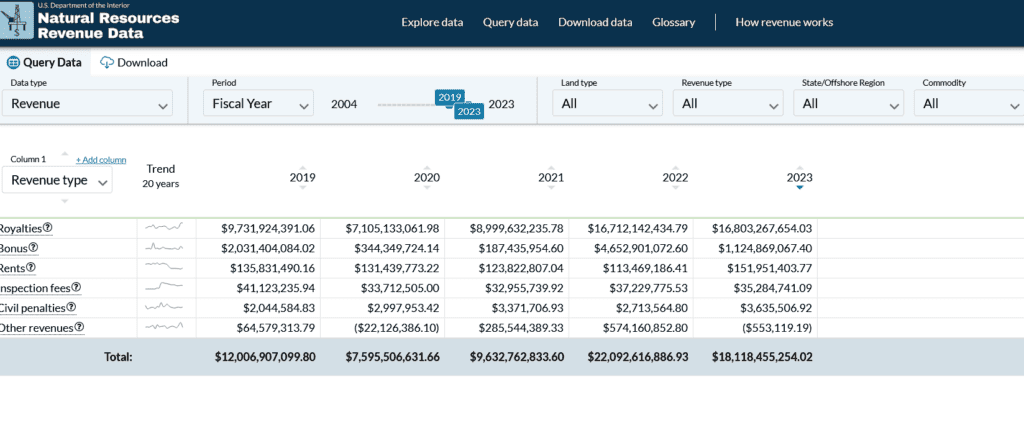Synchronistically, given yesterday’s Wilderness discussion, I happened to be with some younger people (this covers a lot of age terrain, at my age) who decided to discuss William Cronon’s 1995 essay “The Trouble With Wilderness or Getting Back to the Wrong Nature. They had actually read this essay during college (!). Perhaps many of us older folks are unfamiliar with this essay; sometimes books like Uncommon Ground are a big slog for those of us less philosophically inclined, if we are not assigned them. We could wait until the essay is 30 years old, but some of us might not be readily accessible for commenting by then.
Anyway, the topic of the discussion yesterday was “what strikes us about this essay, now almost 30 years old?” Which I think is also a good question for TSW readers. Here’s a link to the essay.
Here are a few of my excerpts and thoughts, please add your own.
Thus the decades following the Civil War saw more and more of the nation’s wealthiest citizens seeking out wilderness for themselves. The elite passion for wild land took many forms: enormous estates in the Adirondacks and elsewhere (disingenuously called “camps” despite their many servants and amenities), cattle ranches for would-be rough riders on the Great Plains, guided big-game hunting trips in the Rockies, and luxurious resort hotels wherever railroads pushed their way into sublime landscapes. Wildernes suddenly emerged as the landscape of choice for elite tourists, who brought with them strikingly urban ideas of the countryside through which they traveled. For them, wild land was not a site for productive labor and not a permanent home; rather, it was a place of recreation. One went to the wilderness not as a producer but as a consumer, hiring guides and other backcountry residents who could serve as romantic surrogates for the rough riders and hunters of the frontier if one was willing to overlook their new status as employees and servants of the rich.
A few years ago I went to Alaska and noticed that many of my fellow travelers (spending more money to go deeper into the wilderness) were financially favored folks- almost like a curated Wilderness Experience. I’m not criticizing them nor the guides that support them. Just pointing out it’s not like someone from Bend hiking into Sisters Wilderness for the day. There are all kinds of wilderness experiences.
There were other ironies as well. The movement to set aside national parks and wilderness areas followed hard on the heels of the final Indian wars, in which the prior human inhabitants of these areas were rounded up and moved onto reservations. The myth of the wilderness as “virgin,” uninhabited land had always been especially cruel when seen from the perspective of the Indians who had once called that land home. Now they were forced to move elsewhere, with the result that tourists could safely enjoy the illusion that they were seeing their nation in its pristine, original state, in the new morning of God’s own creation. Among the things that most marked the new national parks as reflecting a post-frontier consciousness was the relative absence of human violence within their boundaries. The actual frontier had often been a place of conflict, in which invaders and invaded fought for control of land and resources. Once set aside within the fixed and carefully policed boundaries of the modern bureaucratic state, the wilderness lost its savage image and became safe: a place more of reverie than of revulsion or fear. Meanwhile, its original inhabitants were kept out by dint of force, their earlier uses of the land redefined as inappropriate or even illegal. To this day, for instance, the Blackfeet continue to be accused of “poaching” on the lands of Glacier National Park that originally belonged to them and that were ceded by treaty only with the proviso that they be permitted to hunt there.
I was hoping that this had changed; Montanans know more about this than I do..but I did find this fairly recent article from the Columbia Climate School. In those day, climate had yet to become everything-ized, so that’s a definite change.
Facing starvation in 1895, the Blackfeet were essentially coerced into selling part of their land, which they call the “backbone of the world,” to the United States government for $1.5 million. This 1895 agreement was supposed to secure the region as federal forest land, and the United States government had agreed that the Blackfeet would always have access to it for hunting, fishing, gathering, and other uses. But in 1910, the northern half of the territory was turned into Glacier National Park — which had not been written into the original 1895 agreement. Once this happened, the Blackfeet no longer had access to hunting or gathering there.
So this was actually a “Parkifying” issue and not a Wildernessing issue, sounds like.
“But, having said that,” LaPier added, “we still cannot hunt. We still cannot gather [legally] on Glacier Park land.” Hunting is hard to hide from park rangers, but some Blackfeet can get away with hunting in Glacier during the winter. Gathering, on the other hand, can be done alone and quietly. “Tribal members believe it’s their right to gather on that land, and so they do,” she said.
*********************
Back to Cronon:
The removal of Indians to create an “uninhabited wilderness”-uninhabited as never before in the human history of the place-reminds us just how invented, just how constructed, the American wilderness really is. To return to my opening argument: there is nothing natural about the concept of wilderness. It is entirely a creation of the culture that holds it dear, a product of the very history it seeks to deny.
***
To do so is merely to take to a logical extreme the paradox that was built into wilderness from the beginning: if nature dies because we enter it, then the only way to save nature is to kill ourselves. The absurdity of this proposition flows from the underlying dualism it expresses. Not only does it ascribe greater power to humanity that we in fact possess-physical and biological nature will surely survive in some form or another long after we ourselves have gone the way of all flesh -but in the end it offers us little more than a self-defeating counsel of despair. The tautology gives us no way out: if wild nature is the only thing worth saving, and if our mere presence destroys it, then the sole solution to our own unnaturalness, the only way to protect sacred wilderness from profane humanity, would seem to be suicide. It is not a proposition that seems likely to produce very positive or practical results.
Why, for instance, is the “wilderness experience” so often conceived as a form of recreation best enjoyed by those whose class privileges give them the time and resources to leave their jobs behind and “get away from it all”? Why does the protection of wilderness often seem to pit urban recreationists against rural people who actually earn their living from the land (excepting those who sell goods and services to-the tourists themselves)? Why in the debates about pristine natural areas are “primitive” peoples idealized, even sentimentalized, until the moment they do something unprimitive, modern, and unnatural, and thereby fall from environmental grace?
This reminds me of the Native Americans who want a pipeline, or have supported the Willow Project, or the people of King Cove who want a road (I’m not sure either that the Izembeck Refuge is Wilderness). I’m a general fan of Jimmy Carter but as he weighed into the latter controversy in the May of 2022 (granted that he was 97),
In response to questions from The New York Times, Mr. Carter wrote that the law “may be the most significant domestic achievement of my political life.”
“Our great nation has never before or since preserved so much of America’s natural and cultural heritage on such a remarkable scale,” he added.
In his brief, Mr. Carter wrote that he, like many Americans, had experienced Alaska’s public lands many times. In his response to The Times’s questions, he described one visit, to the Arctic National Wildlife Refuge, one of the largest expanses of wilderness in the United States, as “one of the most unforgettable and humbling experiences” of his life.
“We had hoped to see a few caribou during our trip, but to our amazement, we witnessed the migration of tens of thousands of caribou with their newborn calves,” he wrote.
****************
My guess is that in the last 30 or so years, we have become less consciously attached to the Eden and wasteland ideas of the Hebrew Bible and the New Testament. We have become more aware of Indigenous people, although perhaps our efforts to re-empower them have run into various roadblocks (lack of interest perhaps, on the R side, and difficulties with ENGO calling the shots on the D side). There remains a certain macho-hood of some Wilderness ideas, including the necessity of large dangerous carnivores for the best experience. And the size and influence of the anthropogenic global warming/climate change bandwagon means that ideas of static Nature best left alone are more difficult to support. That’s my take.. read the essay and see what you think!







